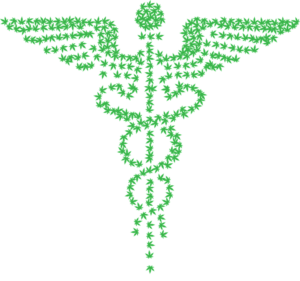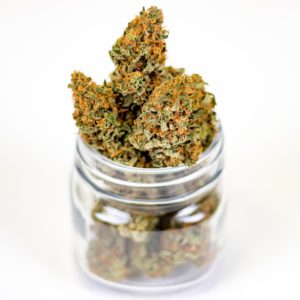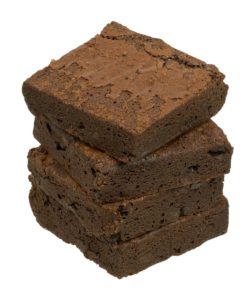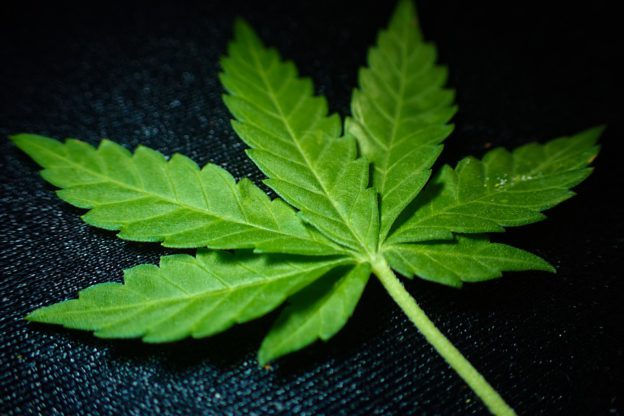We’ve heard it called many things such as hashish, bud, grass, blunt, weed and ganja, and although it is often referred to as marijuana, the preferred medical term is cannabis. Whatever you decide to call it, however, the question still remains… can it help you? While only you know your own body and what will or will not work for you, I will mention some of the pros and cons of using medical marijuana for pain, what it can do for other common fibromyalgia concerns and other popular therapeutic uses for this plant, then… you be the judge.
What do the doc’s think?
While medical marijuana has been used for many years, it is only more recently that doctors are recognizing its possible benefits for their fibromyalgia patients. Dr. Ginevra Liptan, MD states in her book The Fibro Manual, “at least once a day a patient asks me if marijuana might help with their symptoms. The short answer is yes, but we don’t have many studies to back that up.” That’s too bad, especially when many patents who have used it report that it’s often better at lowering pain levels than most opioids.
The unfortunate truth is there have not been many studies dedicated to understanding the potential medicinal and therapeutic properties of this plant. On the bright side, however, it appears as though this is beginning to change and will eventually lead to more knowledge and hopefully less of the negative stigma that still surrounds it’s use, especially for medicinal purposes.
Dr. Ginevra also mentions in her book that many of her patients have reported that cannabis reduces their pain and improves their sleep; in fact, several have been able to come off high doses of opiates completely and use only marijuana for pain management. That’s amazing, considering the astonishing amount of opioid related deaths each year. Click here to see the full review post for her book.

In a study published in the June 2017 journal Cannabis and Cannabinoid Research, almost three thousand patients were surveyed. These patients all used opioids and cannabis for pain management. An astounding ninety-seven percent reported that cannabis allowed them to decrease their opioid use. Eighty-one percent even felt that cannabis alone was more effective than the combination of cannabis and opioids.
Unfortunately, not all Doctors are quick to sign over a prescription. Currently, in the United States the use and possession of cannabis, for any reason, is still illegal under federal law. State laws, however, vary from state to state and in many ways greatly conflict with the federal laws. 33 states, as well as the district of Columbia have approved cannabis for medical use, but because of this legal grey area, many physicians are still hesitant to recommend it for their patients. For more information on these laws, click here.
On October 17th, 2018, cannabis was legalized for recreational use in Canada; cannabis edibles, however, will not be sold in stores until late 2019. Cannabis may be purchased by adults 18 or 19 years of age (depending on the province) at any physical location or government-run website. Medical cannabis can also be obtained from a doctor. Every province has its own laws and policies governing the use of marijuana. For more information on these laws in Canada, click here. Now let’s talk a bit about the cannabis plant…
It all starts with cannabinoids
Cannabinoids are chemical compounds found in cannabis flowers that give it medicinal properties. They affect the endocannabinoid system, a type of ‘central network’ of communication that takes place in the brain and aids in regulating many bodily functions, such as mood, appetite, pain and memory. There are possibly hundreds of cannabinoid compounds, including Cannabigerol (CBG), Cannabichromene (CBC), THCV, and Cannabinol (CBN).
All of the above-mentioned cannabinoids have many health benefits and there are many more of these cannabinoid compounds that have not even been identified yet. Of all the cannabinoids, however, Tetrahydrocannabinol (THC) and Cannabidiol (CBD) are two that are abundantly found in marajuana strains and undoubtably the ones that are most talked about.
So, what is THC?

THC, a phytocannabinoid, is a psychoactive compound and is the one mostly responsible for giving people that ‘high’ when they use marijuana. THC can bind to molecules in the brain’s endocannabinoid system as well as other receptors in the body. This can temporarily alter a person’s balance, slow reflexes, affect one’s ability to form short term memories and may even cause hallucinations.
THC can also increase the levels of a neurotransmitter called dopamine, thus producing feelings of relaxation, happiness and euphoria. On the other hand, some individual’s ‘high’ may leave them feeling paranoid or anxious instead. Everyone is different and therefore will not experience the exact same effects as the other.
THC can make you hungry! Because of THCs influence on ‘the hunger hormone’, ghrelin, it can also impact hunger and, for many people, bring on the ‘munchies.’ For those who are watching their weight or want to lose weight, this may not be a great thing. However, for recovering cancer patients who have lost their appetite due to chemo, HIV or AIDS patients or those who suffer from an eating disorer called anorexia nervosa, it may be a very beneficial thing.
Studies have also show that cannabis may help shrink cancer cells. In the March 2000 issue of the journal Nature Medicine, Dr. Manuel Guzman, professor of biochemistry at the university of Madrid, reported that cannabis not only shrank cancerous tumors in mice, they did so without damaging surrounding tissue. THC has also been shown to be helpful in the treatment of nausea especially for those undergoing chemotherapy or radiation. for more information on this study and other impactful studies on marijuana, visit this page.
What are the benefits of THC on fibromyalgia?
Remember when I said that THC has the ability to bind to certain receptors in the body? Well, when they bind to CB2 receptors (located on the cells of the immune system) it has a powerful anti-inflammatory effect on the body. And yes, because of its dopamine producing effects, it can also reduce pain as well as ease the symptoms of stress, depression and anxiety! For more ideas on how to reduce pain naturally, click here.

The sedating effects of THC may also help fibromyalgia patients who struggle with insomnia. For those who have tried it all, including popping pills every night, cannabis may be an alternative worth looking into. THC produces relaxing effects and can also help individuals achieve deeper, more restful sleep and enable them to stay asleep for longer periods.
What about CBD?
Unlike THC, CBD does not produce any psychoactive effects, meaning it will not get you ‘high’ but still has many therapeutic benefits. Like THC, CBD has also been shown to be a great pain reliever and has the ability to reduce inflammation. This is one of the reasons why CBD is becoming such a popular choice for people with fibromyalgia, and popular in general. Another reason could simply be the fact that CBD is much more available than THC.
While THC is still illegal in some US states, CBD alone, is usually not. In fact, since 2018 most states have legalized the substance and as a result, there are many products on the market, available in stores and online that contain the ever-popular cannabinoid. The products range from gummy bears and chocolate to capsules and vape pens.

Buyer beware! Hemp oil does not always contain CBD, or the amounts can be very minute. Even products claiming to contain CBD may in fact have very little to none. Be sure to do your research so that you know you are getting your money’s worth. Keep in mind that, unlike THC, CBD may have an energizing effect on the body, which may not make it an ideal supplement before bedtime.
While CBD has a very positive effect on many of the unpleasant symptoms associated with fibromyalgia, it offers other benefits as well. CBD is often used to prevent seizures and has shown much success in the treatment of epilepsy. There are also some studies that support its success for the prevention and treatment of neurological diseases, such as Alzheimer’s, Parkinson’s and multiple sclerosis.
In addition to relieving pain, shrinking cancerous tumors etc., cannabis is also helpful in the treatment of Crohn’s disease, post-traumatic stress disorder (PTSD), depression, anxiety, stress, arthritis, glaucoma, migraines, ADHD, PMS, chronic traumatic encephalopathy (CTE), and believe it or not, it’s also been successfully used as a treament for those who suffer from substance abuse!
Wait, there are different types?

That’s right, there are three main varieties of the cannabis plant, Sativa, Ruderalis and Indica. Each species also contains different amounts of CBD, THC and other cannabinoids. Ruderalis contains almost no THC, for example, but is high in CBD. Most marijuana strains that are commercially available will be divided into two main groups, indica and sativa, while hybrid cannabis plants are a combination of these two strains.
It may be difficult to judge just how a particular hybrid strain will affect you. For cannabis users who want to achieve that ‘high’, look for a more balanced 1:1 CBD to THC ratio. It’s suggested that taking these cannabinoid levels into consideration as well as the variety of the plant are important factors in finding the right strain for you.
For those who are want the medicinal effects but are not interested in feeling the psychoactive effects, or for beginners, choose a strain with a higher CBD and lower THC ratio. The less THC the marijuana strain contains the less of a ‘high’ you will experience from it. For many, the process of choosing the ideal one may seem a little daunting at first and could take some trial and error.
Sativa
The sativa species is tall with long branches and long narrow leaves with very pronounced separation which are larger than those of cannabis indica or cannabis ruderalis. Sativa may not produce the same type of sedating affect as indica and is thought by many to be more of a social or daytime type of cannabis. Possible uses for sativa include:
Depression
Anxiety
Chronic pain
Increased mental focus
Increased energy
Indica
Indica is a short and stocky plant with wide leaves and not much separation between them. The color of the leaves are usually a uniform, dark shade of olive green. This species has a short flowering cycle, which makes it more ideal for growing in colder climates than the other varieties. Indica is also well known for producing a relaxing, sedating type of effect on the mind and body. Common uses include:
Muscle tension
Loss of appetite
Stress
Nausea
vomiting
Pain
Insomnia
What is the difference between recreational and medical marijuana?

If you purchase cannabis for personal use, it’s considered recreational even if you are using it for relaxation, stress or pain management. It is medical if it is authorized by a health care professional for the purpose of treating an illness or managing symptoms. Usually medical marijuana has low THC levels and higher levels of CBD than recreational marijuana and therefore will have less psychoactive effects.
The first FDA approved medication containing CBD is called Epidiolex which is used to treat rare, severe forms of epilepsy. Naturally occurring CBD and THC can also be found in the drug Sativex (available outside the US) which is used to relieve pain. The drug Cesamet contains a synthetic form of THC and is used to treat nausea, vomiting and loss of appetite caused by chemo.
You don’t have to smoke it!
As I mentioned before there are many products available in certain US states and Canada that permit the use of CBD in products. Depending on the laws in your country or region, medicinal cannabis as well as recreational cannabis containing THC can also be smoked, used in a vape pen, sprayed under the tongue, applied topically, brewed in tea, or made into homemade edibles.
The most popular methods these days for reducing pain seem to be vaporizing and edibles. Many individuals prefer to use vaporizers so they are not exposed to the harmful carcinogens associated with smoking marijuana. Still, it is important to start with a small amount and wait about twenty five minutes before assessing pain levels. With edibles, it can take up to two hours to feel their full effects, so patience is key! On the other hand the effects from edibles typically last much longer than the effects from inhalation, which is why it is a popular choice for insomnia as well as for pain.
Topicals are another option for those that would like to experience the pain relieving benefits of marijuana without the psychoactive effects. They are applied to the skin and can usually be purchase in the form of a lotion, oil, spray or balm. At the end of the day, however, it’s all about what method you are most comfortable with.
Will it work for me?

Individuals often tell me how much it has decreased their pain, stress and anxiety, so I believe it can help. But as I mentioned before, everyone is different. While there are many potential benefits to medical or even the occasional use of recreational marijuana, experiences while on the substance will vary greatly from person to person. This is a personal decision that you must make and a topic worth discussing with your doctor or other qualified health care professional if you think that it may help you. I hope I have at least given you some insight into what medical marijuana is and its possibilities.
Just be sure that if you do decide to give it a try, use small amounts and take it slow at first, especially with edibles. Do your research when it comes to cannabis laws in your country’s state or province and familiarize yourself with them. Be sure to obtain cannabis from a doctor, a licensed private seller or government-run facility. Never sell your pot or share it with others and always use responsibly. If you have any questions or comments, we’d love to hear from you in the comment section bellow. Thanks for stopping by!

Thank you very much for the information, I enjoyed reading it.
Looking forward to more information when studies are actually done and complete..
Lorraine,
Thank you, I’m glad you enjoyed the article and I also can’t wait for more studies and research to be done as well. there is still so much to learn about this plant and it’s potential health benefits.
I completely agree! I wish this country would move away from opioids and towards cannabis. There are so many benefits on so many levels, and it is much healthier than the alternative. I think that marijuana got such a bad rap as a dangerous drug that a lot of people have a problem with it and do not even look at the possible benefits. And now with the option to get CBD oil you can get the health affects without the high from THC. Especially with people with Fibromyalgia and other such ailments that have no other way to get relief.
Travis,
Yes, sometimes a more natural approach to pain relief is the answer, unfortunately your right, it has gotten a pretty bad rap over the years and is still often viewed as dangerous and associated with destructive behavior. But the truth is medical cannabis has been used successfully to treat many aliments and has been given to cancer patients for many decades now because it works. And while it’s quite possible to over do it with cannabis, it is near impossible to die from an overdose, as opposed to opioid overdose which can be fatal. Hopefully medical cannabis looses more of the negative stigma associated with it in the future as more research is done and more studies are conducted into other potential health benefits, I believe we’ve only just scratched the surface right now. Thanks for the comment!
Hi,this is a very informative article you have written. You did an awesome job explaining the benefits of marijuana. I used to smoke for a long time but no longer do because I became dependent on it. I know it did make me feel more relaxed at times because I have anxiety and depression sometimes. So I see nothing wrong with it and am glad to see a site like this out here explaining the benefits.
Thanks, I’m glad you found the article informative. This is one of the most common reasons people use medical marijuana, to combat anxiety and stress.